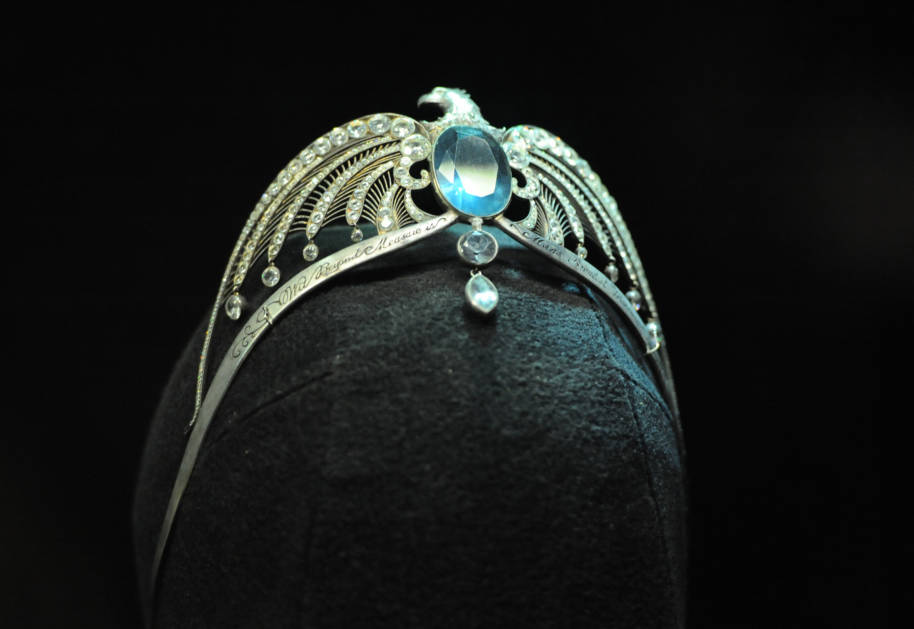Arguably the most terrifying of the Hogwarts ghosts, the Bloody Baron wore the chains he clanked so loudly as penance for a crime of passion committed centuries ago.
With his silver bloodstains and harsh, whispering voice, the Bloody Baron was the most fearful phantom on the block. But none of the other spirits knew the tale of unrequited love behind his bloodied state. That is, except for the one whose murder earned him his nickname: Helena Ravenclaw, known to Hogwarts students as the Grey Lady.
The Baron was believed to have attended Hogwarts in the time of the four founders, and was violently in love with the daughter of Rowena Ravenclaw. The pair were soon doomed to share the same posthumous universe for eternity. How did this happen?
Overshadowed by her brilliant, brainy mother, Helena stole what legend has it was a cornerstone of Rowena’s wit and wisdom – a tiara enchanted to enhance the wisdom of the wearer. This would later be known as the lost diadem of Ravenclaw.

‘I stole the diadem,’ Helena told Harry during the Battle of Hogwarts. ‘I sought to make myself cleverer, more important than my mother. I ran away with it.’ Helena fled to Albania with her mother’s diadem, never to achieve her ambitions. She could never have predicted that Voldemort would find her mother’s precious diadem centuries later and turn it into a Horcrux.
The loss of the diadem was a terrible blow to Rowena, who hid its loss and her daughter’s betrayal from the other Hogwarts founders. On her deathbed, Ravenclaw sent the Baron to find Helena, because she knew that he loved her daughter. ‘She sent a man who had long loved me, though I spurned his advances, to find me. She knew that he would not rest until he had done so,’ Helena told Harry.
The hot-headed Baron tracked her down, but when Helena refused to return with him, he murdered her in a rage. Overcome with remorse, he turned the blade on himself. ‘All these centuries later, he wears his chains as an act of penitence… as he should,’ Helena said bitterly.

The Bloody Baron was the ghost of Slytherin house and was famous for the clattering of chains and rages in the Astronomy Tower, no doubt still tortured by his actions all those years ago. The Grey Lady, Ravenclaw’s house ghost, would often be seen drifting around the castle serenely.
Both ghosts regularly attended Hogwarts start-of-term feasts, but tended to stick to their own house tables. Both had a reputation for being standoffish. Nearly Headless Nick (Gryffindor) and the Fat Friar (Hufflepuff) were a lot friendlier to their students.
It took quite some persuading on Harry’s part to get the story of her death out of the Grey Lady. It was only when Harry reminded her of the part she played in helping Voldemort locate the diadem in the forest where she died that she remorsefully shared her tale. It seemed it was not just the Baron who was tormented by regret.

An unexpected benefit of the Bloody Baron’s reputation was that he was the only one who could keep Peeves under control. We don’t know if Peeves knew the story behind the Baron’s bloodstained appearance, but we hope he would’ve been tactful enough to steer clear of any songs on the subject if he did.


